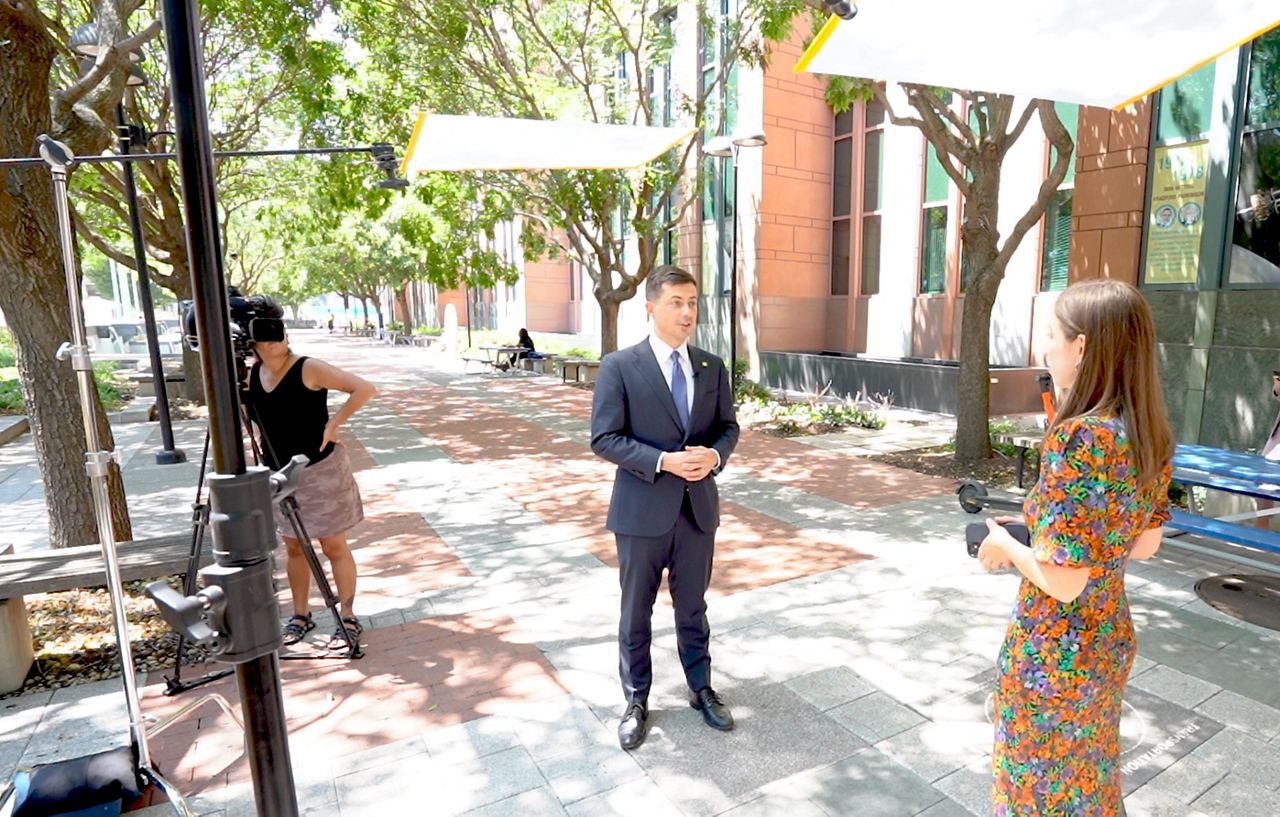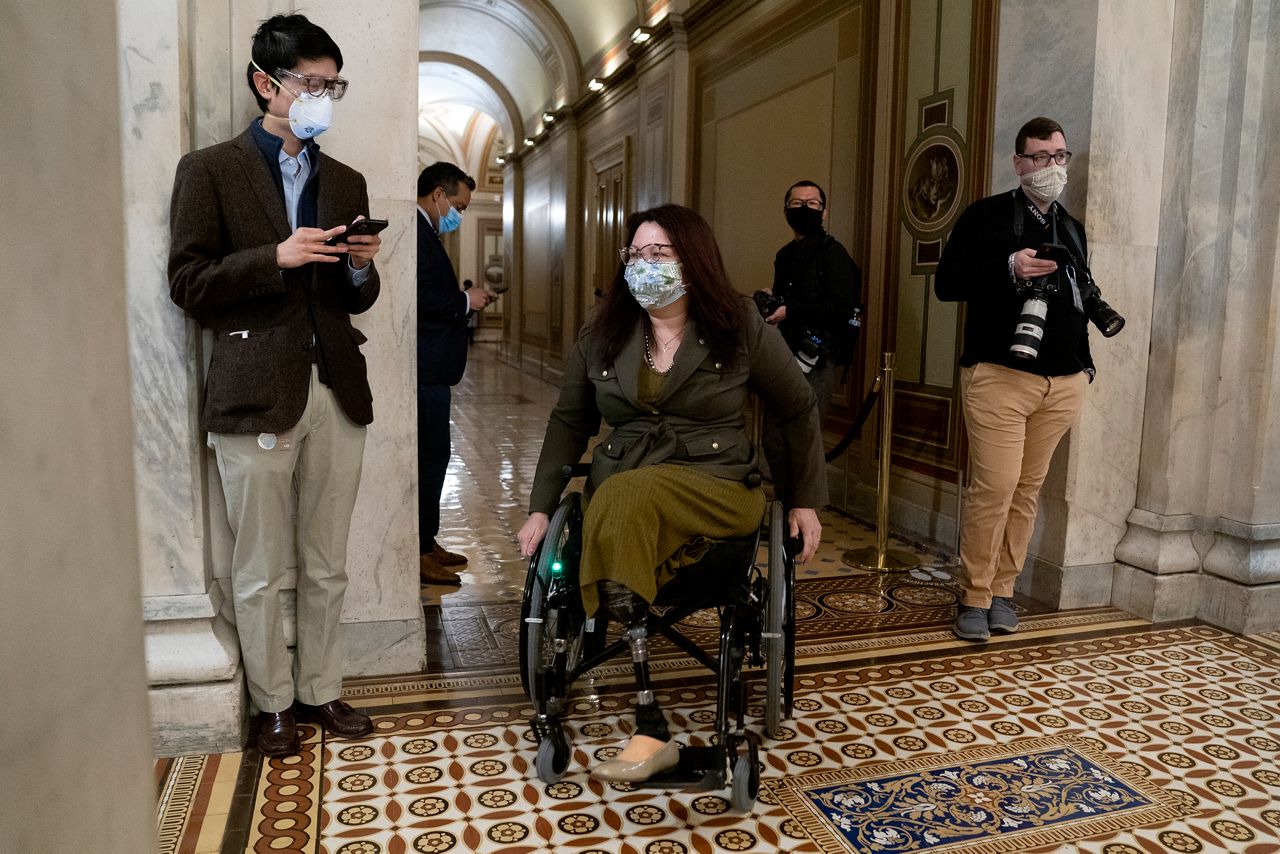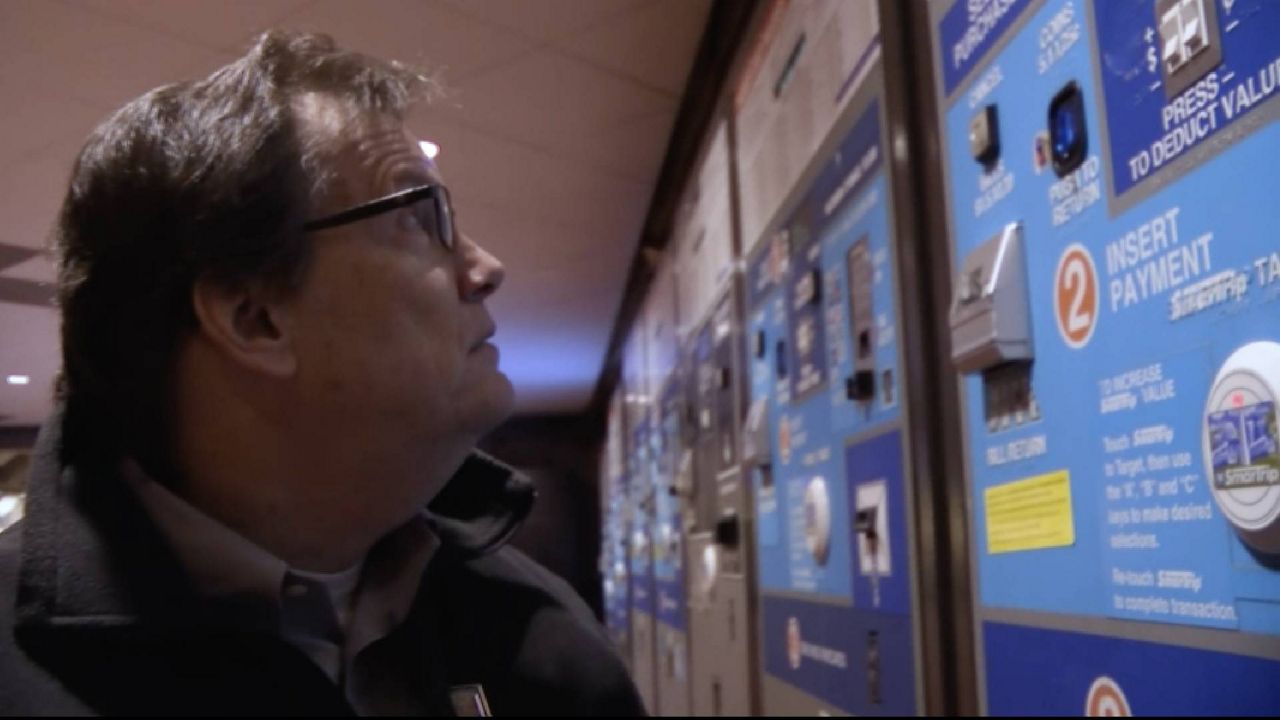The Biden administration on Tuesday made millions of dollars in new funding available to transit agencies to help make more of their subway and commuter rail stations accessible to Americans with disabilities.
The $343 million in funding is the first of its kind, part of a federal program uniquely dedicated to address some of the 900 stations around the country that were built before the Americans with Disabilities Act (ADA) became law and which are still not in compliance.
On the 32nd anniversary of the ADA, Transportation Secretary Pete Buttigieg told Spectrum News that money has often been the missing piece for transit agencies who want to upgrade their stations.
“It's one thing to encourage or persuade or push an agency to become more accessible,” the secretary said in an interview at the Department of Transportation. “What we're doing now is we're funding agencies to become more accessible.”

The five-year All Stations Accessibility Program (ASAP) includes a total of $1.75 billion in grants from the infrastructure law passed last year. The first tranche opened up to applications on Tuesday.
It’s geared toward cities like New York, Boston and Chicago, which had much of their so-called “legacy” stations grandfathered in when the ADA became law in 1990.
New York has more inaccessible stations than anywhere else.
Just 27% of the Metropolitan Transportation Authority’s 472 stations are usable for people with disabilities, meaning they’re forced to find other ways to get around.
“The system is well over 100 years old, and elevators are still a relatively new phenomenon in the system,” Lisa Daglian, who leads the Permanent Citizens Advisory Committee to the MTA, told Spectrum News.
“That's pretty unconscionable.”
Under a new legal settlement, the MTA has now committed to make 95% of non-compliant stations accessible — but not until 2055.
A spokesperson for the agency told Spectrum News that they budget an average of $79 million per station to achieve accessibility, meaning the entire upgrade will add up to tens of billions of dollars.
“The biggest holdback is the funding sources,” Daglian said. “So if there were more money, we'd see more projects.”
After the MTA settled a class action lawsuit last month, the agency is now required to devote 15% of its capital budget to accessibility, updating dozens of stations each year.
But their timeline could get a little boost from the new ASAP program launched Tuesday.
“We're excited to have a whole new program. Not just growing funding in an existing program, but something entirely new to help their riders,” Buttigieg said.
Still, the grant money is relatively small compared to MTA’s budget and to other projects in the $1.2 trillion infrastructure law.
Sen. Tammy Duckworth, D-Ill., who uses a wheelchair, led the creation of the ASAP program and had called for $10 billion for transit access.
“I can't use Chicago's L, for example. I've never used the New York subway, because it's not accessible,” she told Spectrum News.
“I'm still going after the full 10 billion,” she added. “This is a good start, right? You’ve got to start somewhere.”

The ASAP program is meant to be supplemental for agencies like the MTA or the Chicago Transit Authority who already are making efforts toward widespread accessibility. And the federal money requires a 20% local match.
There is no mechanism to prevent agencies from spending less on accessibility themselves if they receive an ASAP grant, but Daglian of the MTA said the agency intends to use any new federal money on additional projects.
And Buttigieg hopes officials will use the grants as an extra boost to reach broad accessibility more quickly – ultimately helping everyone.
“Anyone who has ever pushed a stroller, pulled a roll-aboard suitcase — anybody who ever reflects on the fact that we all could age into disability sooner or later — should be supportive of these efforts,” he said.






